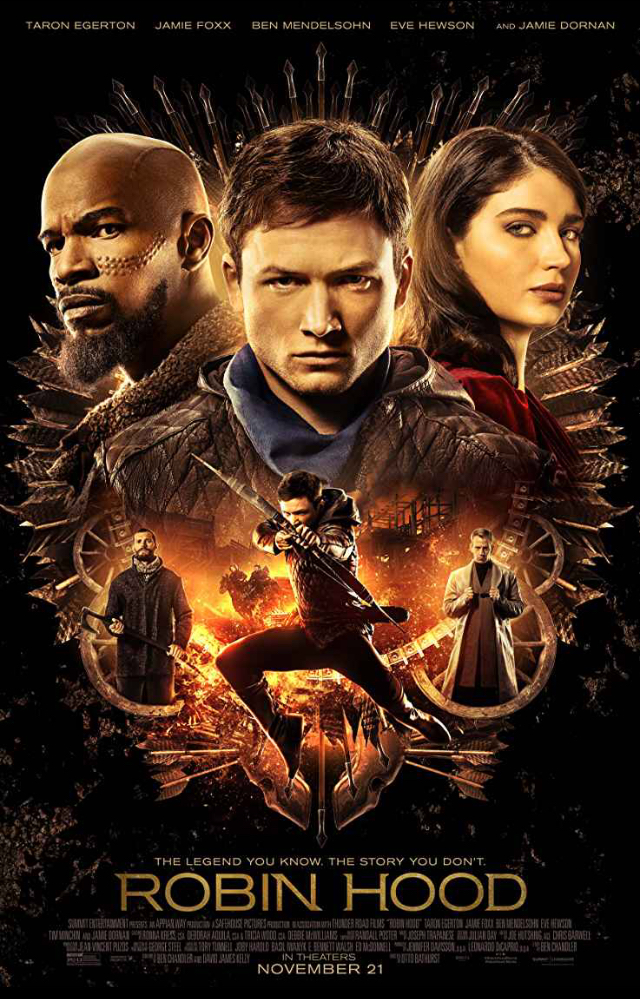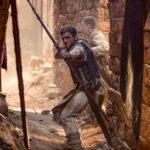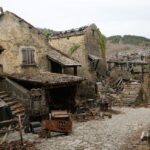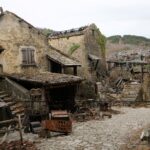
Synopsis
“Robin Hood: Origins” directed by Otto Bathurst is an American action adventure filmed in 2017, partly in Završje in Istria, which “plays” Robin’s hometown Loxley. Numerous action scenes were filmed on the bridge of the former railway Parenzana, while Dubrovnik served as Nottingham. The film was produced by Leonardo DiCaprio’s production company Appian Way. In the race for Location Award, organized by EUFCN – European Film Commissions Network and Cineuropa portal, Završje won the second place for the best location in film and TV industry.
details
Original title: Robin Hood: Origins
Year: 2018
Country of production: USA
Production: Summit Entertainment
Genre: drama, action, adventure, thriller
Directed by: Otto Bathurst
Starring: Taron Egerton, Jamie Foxx, Eve Hewson, F. Murray Abraham, Jamie Dornan, Ben Mendelsohn, Tim Minchin
Filming locations in Istria: Parenzana bridge, Završje
Other locations: Dubrovnik, Budapest, Tura
REVIEW
ROBIN HOOD: ORIGINS, directed by Otto Bathurst, 2018
MIDDLE-AGE MOBILIZATION INVITATION
A bridge, just like the one in Parenzana, which served the film well, could be built between what this “Robin Hood” could be and what it is. The main character is a passionate fighter for the poor, standing firmly against the wealthy elite – but the underdeveloped narrative at the heart of the story fails to leave a lasting impression or provoke deeper reflection. It is a classic case of stealing from the rich to give to the poor, yet the audience is left with little more than a technically accomplished spectacle – lavish costumes, dazzling effects and props. Anachronisms and subliminal messages rooted in the present are awkwardly embedded into an ancient setting, weakening the story’s coherence and depth
The story of Robin Hood has changed, but the core remains the same: a brazen outsider rises up against the powerful on behalf of the oppressed. The version by director Otto Bathurst (“Peaky Blinders”) touches the core of the legend, but despite all the effects, it fails to transform it into a convincing whole. Although politically direct and surprisingly consistent in its message, this film adaptation, full of modern details, relies more on the spectacle of science fiction or fantasy than on the historical story from which it is created. Had the direction been more imaginative and the script built on a stronger foundation – and had the acting avoided slipping into pathos that made the characters feel detached from the events unfolding – the final result might have felt far more authentic. Instead, there is a flat, tiring adventure with occasional flashes of intelligence spiced up with a bunch of technological modernization.
Robin Hood, played by Taron Egerton, is a young, athletic nobleman from the fictional village of Locksley in Nottingham, who sides with the oppressed and turns into their hero and avenger. He is moved by their suffering, but also by the war in the Crusades in which he participated against his will. Upon returning from the war to find his estate plundered and his people enslaved, a righteous rage and desire to deal with the tyrants from church and state grows in him. In fact, it is a kind of prequel to the legend of Robin Hood, which is also supported by a completely shaved Robin, which is a rarity.
Donating to the poor, a key part of the legend of this folk hero, is reduced to a minimum. The real “redistribution of wealth” occurs when Robin meets the beauty Marian, who is not of blue blood, but a peasant caught trying to steal Robin's horse – but for a noble cause, because she wanted to help her neighbour. A love is born between the two, which is separated by the war in "Arabia" – a modern depiction of warfare with bows and arrows instead of guns, full of CGI additions. There, Robin witnesses the brutality of commander Guy of Gisbourne, and meets the prisoner John, whose son he tries to save, thereby risking accusations of treason. John would later become his mentor – a figure reminiscent of the wise Yoda.
Upon returning to England, Robin discovers that he is presumed dead. Marian is now with Will Scarlet, and Monk Tuck reveals that Nottingham is under the rule of a despised sheriff – clad in a bloated grey costume – who savagely exploits the people to fund the war effort. There is also F. Murray Abraham in the role of an equally corrupt cardinal, guided by no ethical compass.
Together, Robin and John begin stealing gold from the powerful, and Robin's dark blue-grey hood becomes a symbol of rebellion. Meanwhile, Robin infiltrates the sheriff's inner circle, quietly gathering information and uncovering a conspiracy even darker than he’d dared to imagine. He finds allies in Marian and the cynical monk Tuck – both disillusioned with the world and eager to support a movement that seeks to restore not only gold, but dignity to the people.
A handful of revisionist ideas run through the narrative – like the one that evil stems from childhood trauma– but this is reduced to a mere excuse for grotesque threats of violence, marking yet another misstep in a string of failures. With a handful of generic clichés and a plot that moves as fast as a video game, the film feels bloated. Marian's makeup is extremely modern and the characters' clothes look like they came off a catwalk, in custom-made leather jackets, while Robin's suit is also confusing. In long and tedious action fight scenes, full of exaggerated sound effects, bows and arrows are used and move in scenes like automatic weapon ammunition, and the city looks like a well-groomed and polished medieval amusement park, where everything is clean and too elegant.
Modern phrases and political slogans are a frequent part of the dialogue, while the sheriff even quotes Bush Jr.: “They hate us for our freedom”. His speeches call for fear and the sacrifice of "treasure and blood" and his cynicism towards the authorities is quite pronounced. The friendship between Robin and John is portrayed as an alliance of those who refuse to be manipulated into mutual hatred. The film literally shows platitudes: a character experiencing a political awakening becomes an attacker, and the script indicates how personal and institutional corruption feed off each other, while ideologies and religions are used to exploit workers. Yet all these promising intentions are undermined by flat, formulaic direction, devoid of imaginative spark or emotional depth. The relationships lack meaningful dynamics, buried beneath a bunch of heavy-handed visual effects.











